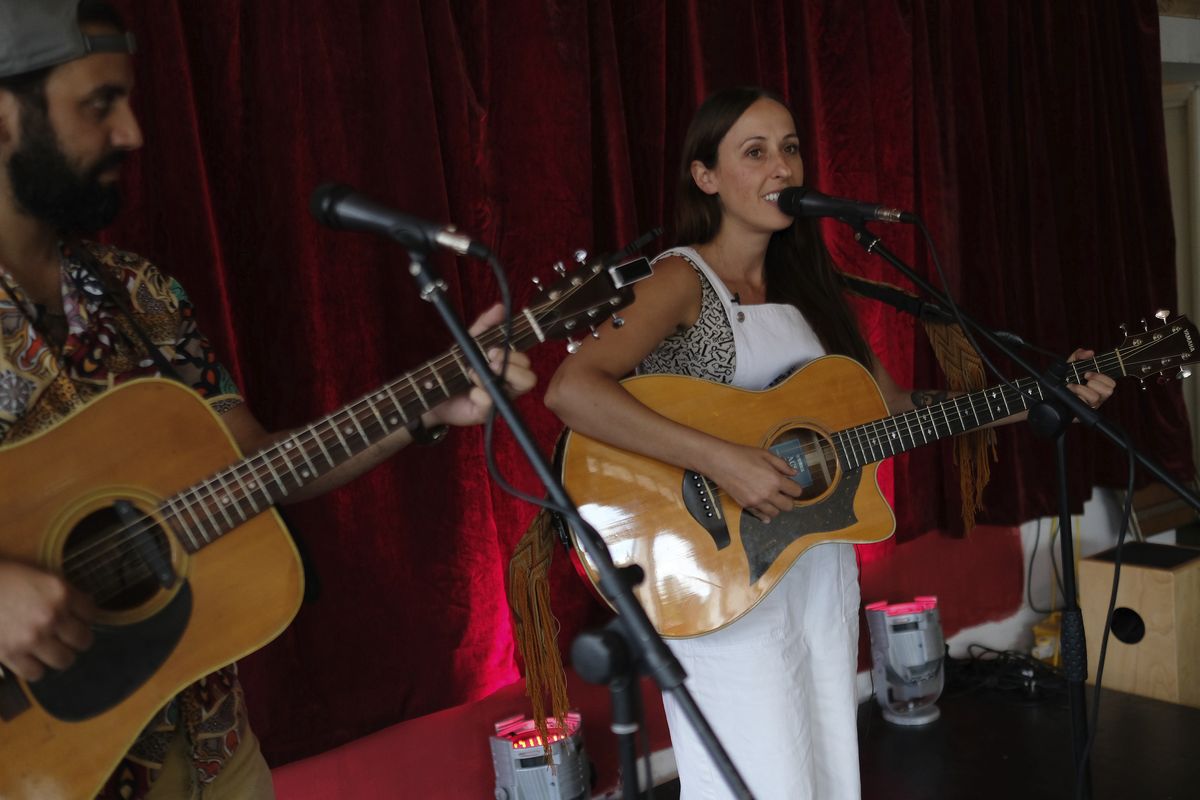The year the music might die: British clubs face closure

LONDON – When Keiron Marshall was 15, he found his way out of a desperate situation with help from an unexpected source: Eric Clapton. The guitar great was host at the first gig Marshall attended, and he was joined on stage by Gary Brooker of Procol Harum, The Who’s Pete Townshend and Beatle Ringo Starr.
Since then, London’s music scene has been a life raft for Marshall, a musician who runs a group of small concert venues with his wife. Growing up in south London, he’d endured racial slurs and regular beatings because of his Pakistani heritage. His uncle was killed in a racially motivated attack; his mother was a heroin addict.
“Music for us is a really personal thing,” said Hannah White, Marshall’s wife. “It’s been totally life-changing.”
But the music scene they know and love may soon be unrecognizable because of the coronavirus pandemic, which has plunged the U.K. economy into its worst recession on record.
Live music venues have been forced to shut doors for nearly five months – and scores are at imminent risk of permanent closure. According to the charity Music Venue Trust, which represents 670 grassroots venues, more than 400 across the country are in crisis.
One of those is Marshall and White’s south London venue group, The Sound Lounge.
The British government announced that indoor and socially distanced live music could resume Saturday. But this doesn’t mean the country’s vibrant live music scene will be immediately restored.
“The truth is that actually only 11% of venues will be able to open in a financially viable manner,” said Mark Davyd, founder and CEO of the Music Venue Trust.
Less than a third of venues have the physical space to house safe, socially distanced gigs. And the majority of those would lose too much money on these reduced-capacity shows for it to be economically feasible.
Clubs have already amassed millions in debts since March.
“In total, these venues are going to be over ($78.3 million) in debt” by October, Davyd said.
The government announced in late July that $266 million would be funneled to 150 grassroots venues that would otherwise have been out of cash by the end of September.
The fund was the first slice of a $1.86 billion “culture recovery package” that was rolled out July 5.
Davyd welcomed the emergency fund, but cautioned this was just a “short-term fix,” one that was only aimed at helping “venues identified as being in crisis.”
In total, $650 million of the recovery package has been allocated to cultural institutions that can “demonstrate their international, national or local significance.” Grant applications for this scheme opened last Monday and venues have until this Friday to submit. For a lot of grassroots clubs that have never applied for grants before, the 11-day window is going to be another challenge.
Derek Nash, a veteran saxophonist and member of Jools Holland’s Rhythm & Blues Orchestra, worries about who the recipients of the bailout will ultimately be.
“Let’s not give it all to opera,” Nash said, adding that he wants the funds to go to venues like the 606 jazz club, a small but popular venue running shows seven nights a week.
At the moment, 606 Club is surviving off a government loan it qualified for through the Coronavirus Business Interruption Loan Scheme. But that has put the club heavily in debt.
“The smaller venues that you come up through where you kind of learn your trade – those are incredibly important,” club owner Steve Rubie said. “If those venues aren’t there, those musicians aren’t getting a chance to practice and learn their trade. So it’s a really serious issue.”
Meanwhile, the Sound Lounge has stayed afloat with help from friends and crowdfunding. The owners applied for the government’s emergency scheme.
“If we can survive it, I think culture, and especially music, is going to have a massive role to play in our recovery,” White said.